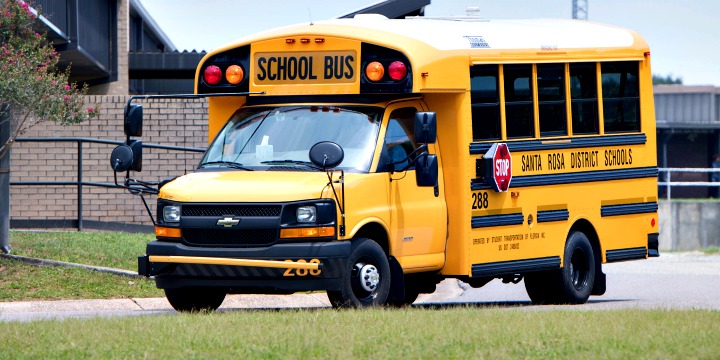
California’s Board of Education was praised for rejecting a controversial ethnic studies curriculum. Photo: Reuters.
California’s Ethnic Studies Model Curriculum (ESMC) is currently on its fourth draft, partially a result of its original antisemitic references, which were removed after Jewish organizations intervened. The curriculum, which will be taught as a graduation requirement, is now close to completion, and due to be ratified imminently. Despite the revisions, students in California’s schools will only be educated about the characteristics and contributions of American Jews within the narrow parameters established by individuals with a political agenda that is — at best — ambivalent toward the Jewish community.
The title of the lesson dedicated to Jews is “Jewish Americans: Identity, Intersectionality, and Complicating Ideas of Race” (See Appendix A, page 494).
Almost the entire section focuses on the racial aspects of American Jewry, reflecting the worldview of the authors that American Jews are one dimensional and unworthy of further attention or deeper analysis on behalf of California’s students.
Given their obsessive attention to race, power, and privilege, the writers of the curriculum originally portrayed Jews as Americans who benefit from “conditional whiteness” and “white privilege.”
Related coverage

March 15, 2021 2:02 pm
When leaders of the Jewish community complained about this portrayal, a compromise was reached; they removed the words “white privilege” but kept the words “conditional whiteness,” maintaining the essence of the message that Jews have social capital or protectia.
The focus on race remained central to the rest of the lesson as well, which focuses on the multiple races found within the Jewish community. For example, the lesson includes a video on Jewish and African-American food and identity, and facts such as, “The racial appearance of Jewish Americans is very diverse and can range from light skinned to Middle Eastern to Jews of color, including African American Jews, Asian American Jews, Latino/a/x Jews, and Native American Jews. Jewish families include multiracial households, and there are diverse appearances both within families and within communities.”
The lesson bears some relationship to the defining aspects of American Jews, who are, indeed, multi-racial. However, it leaves much to be desired, as it prioritizes the framework of the curriculum — categorizing all people according to their race and labeling them as either oppressors or victims –rather than paying tribute to the many dimensions of American Jews.
Most American Jews do not define themselves through a racial lens, as the current iteration of the curriculum suggests.
American Jewish scholars and activists are not writing about “conditional whiteness,” as an aspect of their current existence in American society. Today, many American Jews are concerned about delineating the intersection of antisemitism and anti-Zionism in an attempt to confront the onslaught of anti-Israel and anti-Jewish aggression that confronts members of their community in schools, on college campuses, and from members of Congress.
Many Jewish organizations have embraced the IHRA working definition of antisemitism, which encapsulates that relationship with this example of what is antisemitic: “Denying the Jewish people their right to self-determination, e.g., by claiming that the existence of a State of Israel is a racist endeavor.”
Nonetheless, the ESMC omits that part of the IHRA definition of antisemitism, and does not mention the fact that most American Jews consider Zionism an integral part of their Jewish identity, showing no regard for the priorities of the Jewish community or for California’s Jewish high school students, who are experiencing anti-Zionist antisemitism.
There’s also another glaring omission in the curriculum.
American Jews have made significant contributions to all aspects of American society — a source of pride and patriotism — which the curriculum hardly mentions. Aside from 11 profiles of contemporary American Jews, some of whom were selected primarily for their multi-racial identity, there is little mention of Jews who have impacted our lives.
The curriculum could teach students that the founders and directors of Metro-Goldwyn-Mayer Studios and other major film studios were Jews, many who immigrated from eastern Europe, or that Albert Einstein, the greatest physicist of all time, was a German-born Jew who became an American citizen. They could learn that Jonas Salk, who invented the polio vaccine, was an American Jew, as was Gertrude B. Elion, who won the Nobel Prize in medicine for her discovery of drugs to treat leukemia, and that Rabbi Abraham Joshua Heschel was one of Dr. Martin Luther King, Jr.’s staunchest allies.
If the purpose of the ESMC is to engage students with culturally relevant material (as the California Department of Education has noted) then it has failed when it comes to American Jews. The section needs to be redone, so that it captures the historic and contemporary priorities of the American Jewish community, and instills a sense of pride in California’s Jewish students, rather than reducing them to racial profiles and leaving them otherwise ignored.
The author is the Founding Director of the Alliance for Israel.
Related posts:
Views: 0
 RSS Feed
RSS Feed















 March 16th, 2021
March 16th, 2021  Awake Goy
Awake Goy  Posted in
Posted in  Tags:
Tags: 
















